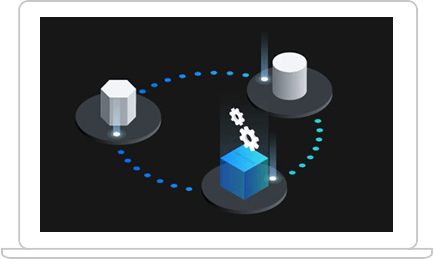.
My Experience with SAP HANA: With Great Power Comes Less Responsibilities
May 25, 2021 | Written by: Prashant Saxena
Categorized: . | IT infrastructure
Share this post:
SAP HANA is an in-memory database management system that delivers high-speed data access. It can offer efficient, high performance data access due to its usage of memory and its storage of data in column-based tables as opposed to the row-based tables of a traditional SQL DBMS. Such a columnar structure can often deliver faster performance when queries only need to access certain sets of columns.

Organizations implement SAP HANA as both a standalone, highly efficient database system, and also as part of the SAP S/4HANA ERP environment and for both of these HANA applications, IBM Power Systems is the ideal hardware for ensuring optimal performance, flexibility, and versatility.
#BeginingOfPower
IBM Power systems started late in the SAP once they sold off their x86 business, it opened the door for IBM to work with SAP to offer clients a 2nd platform choice especially with many ECC shops coming from Enterprise platforms and now their only option is to deploy their most critical business application on Intel.
With thousands of clients running SAP ECC using Oracle or DB2 on AIX or running IBM I, there is a large and experienced install base. IBM’s move to support Linux little endian natively beginning with POWER8 eased any development concerns SAP may have had. IBM Power has been fastest adoption for a platform after the initial SAP Ramp-up Program.
Looking at the two alternatives today, both x86 and IBM Power Systems seem to be competitive architectures for servers running SAP HANA workloads. However, POWER microprocessors were designed to services high-performance enterprise workloads, such as database management systems, transaction processing and ERP systems. Although x86 microprocessors can be used for those type of workloads, too, it is not typically as efficient because of its general-purpose design, as opposed to the POWER processors specific design for enterprise computing
#GrowthOfPower
After the initial Ramp-up program, SAP announced the first GA of HANA for IBM Power in 2015. Since then, it has been the fastest adopted platform by clients to run SAP HANA.
Whether deploying a Greenfield or Brownfield SAP HANA solution, what makes IBM Power such a better platform for SAP HANA over Intel based systems? It starts with its DNA. IBM Power was born an Enterprise system, in the data center running mission critical workloads. Read the Forrester Total Economic Impact of IBM Power Systems for SAP HANA study how they rate the platform.
#FeaturesOfPower
Flexibility, Performance & Resiliency
- SAP Certified HANA Prod OLTP – 24 TB Scale-up
- SAP Certified HANA Prod OLAP – 24 TB Scale-up
- SAP Certified HANA Prod OLAP – 24 TB Scale-out
- SAP exceptions available upon request
- Up to 16 Production VM’s on E950 & E980
- POWER9 servers can scale up to 64 TB of Memory
- Highly resilient memory offering DDDC+1+1
- Memory sparing, spare chips, ChipKill
- HANA is always virtualized using the integrated IBM PowerVM hypervisor
- Live Partition Mobility
- Dynamically add / remove cores and memory
- Supports TDI 5 delivering greater SAPS per core, up to 2X+
- Offers Elastic Capacity on Demand activations of cores & memory
- Highest Reliability excluding Z for 11 years per ITIC
- Concurrent maintenance features for firmware, drives, PCIe adapters, fans and power supplies
- Concurrent maintenance for the I/O path from VM to SAN and network when using Dual Virtual I/O Servers
- Dynamic tuning & optimization
- Supports SAP Native Storage Extension and Fast Restart
- IBM Storwize storage is optimized for SAP HANA on POWERUse of Shared Processor Pools for Production in addition to existing support for non-Prod
- RHEL 8
Clients will deploy fewer systems, while able to host more workloads per system, whether those are legacy SAP ECC, SolMan or non-SAP workloads such as legacy Oracle workloads or possibly new Cognitive workloads.
#ValueOfPower
Businesses tend to focus on the application, discounting the infrastructure as commodity – it’s all the same and they initially took infrastructure decision rather casually but with maturity of SAP HANA, designed as a scale-up in-memory technology customer realized the importance of infrastructure and eventually it became very evident that IBM Power is the optimal platform to host sap HANA.
- Primary benefits such as fewer systems with greater utilization.
- Secondary benefits such as less infrastructure and data center services required, i.e. fewer network & SAN ports, fewer power plugs with lower electrical consumption requiring less to cool.
- Tertiary benefits, often more difficult to quantify such as the downtime the business did NOT have to take to perform a maintenance action such as updating firmware or adding an adapter for additional capacity.
- Other actions such as downstream activities impacting the I/O paths like a network switch service event can all be accommodated with a properly architected and deployed Power solution.
These foundational capabilities allow the business to remain on schedule, consultants continue to work and not be idle.
Conclusion #HanaOnPower.
There are only two options for SAP HANA. One option is the platform forcing you to choose one feature for another making every decision a compromise. The other option is the platform offering complete flexibility, scalability and resiliency with no compromises as even IDC states in its whitepaper. No one wants to go back to their board asking for more money admitting they made a mistake, undersized or failed to anticipate something, so #HanaOnPower is the right choice.
Read more about SAP Hana
Connect with IBM SMEs on LinkedIn: Prashant Saxena
Insurance Company Brings Predictability into Sales Processes with AI
Generally speaking, sales drives everything else in the business – so, it's a no-brainer that the ability to accurately predict sales is very important for any business. It helps companies better predict and plan for demand throughout the year and enables executives to make wiser business decisions.
Never miss an incident with an application-centric AIOps platform
Applications are bound to face occasional outages and performance issues, making the job of IT Ops all the more critical. Here is where AIOps simplifies the resolution of issues, even proactively, before it leads to a loss in revenue or customers.
How ICICI Prudential Life Insurance is Scaling Customer Care and Leveraging AI to Personalize Experiences
Organisations are constantly challenged to meet dynamic customer requirements and rethink ways to engage with them on their terms and as per their convenience. With customers at the core of decision making and business success, organisations are tuning to digital capabilities that can support new-age services. When done well, after sales service boosts the overall customer experience by providing […]



